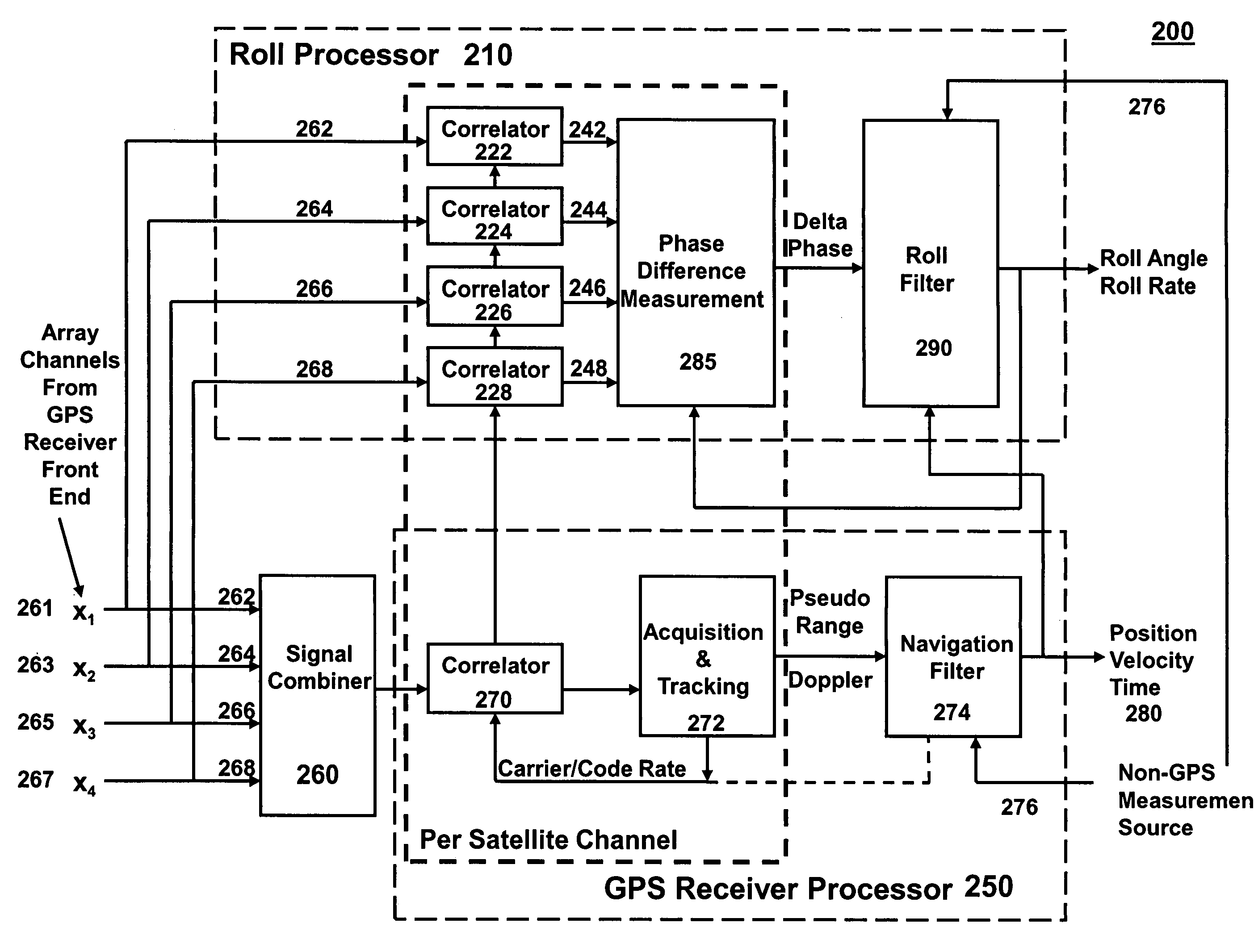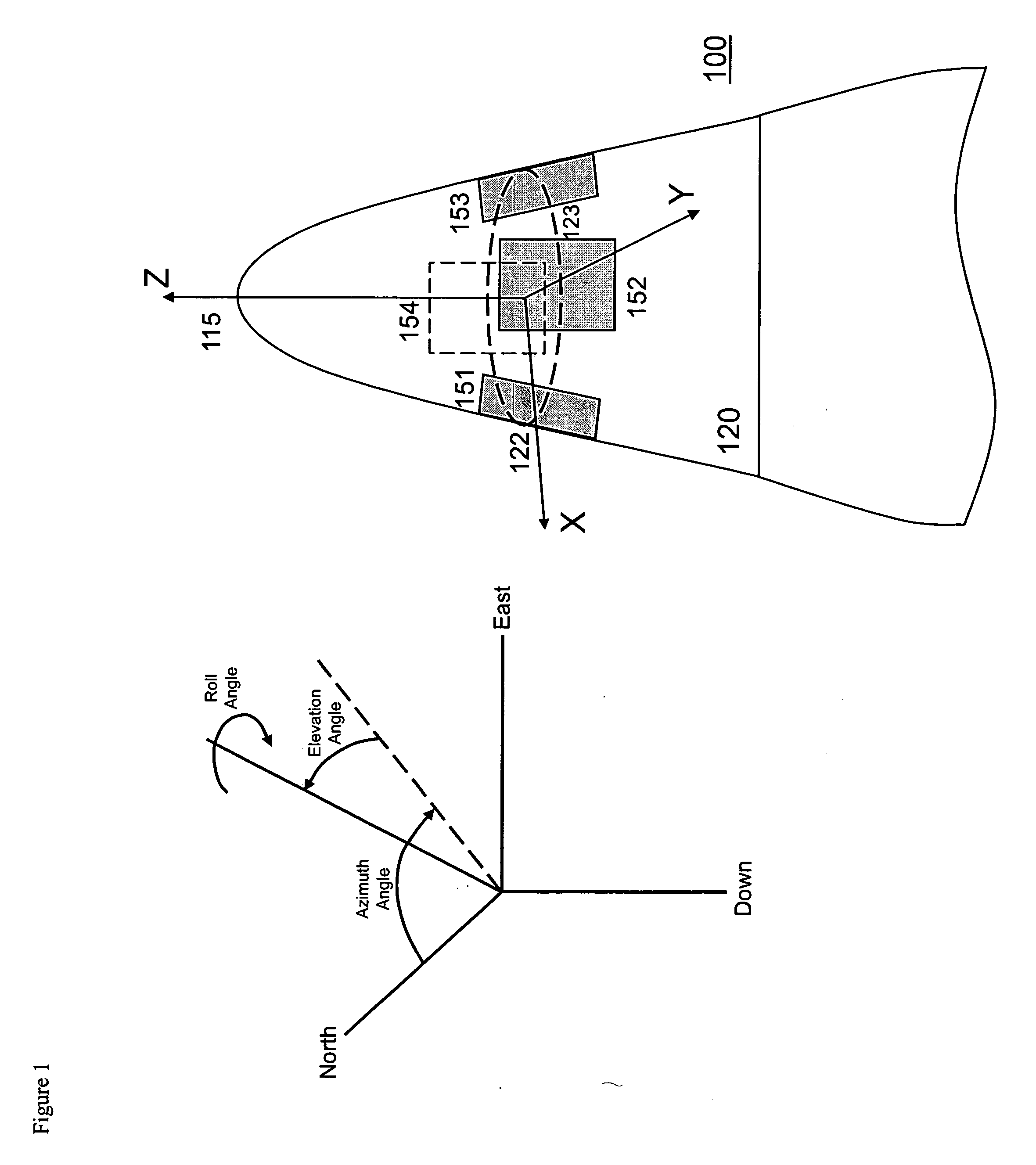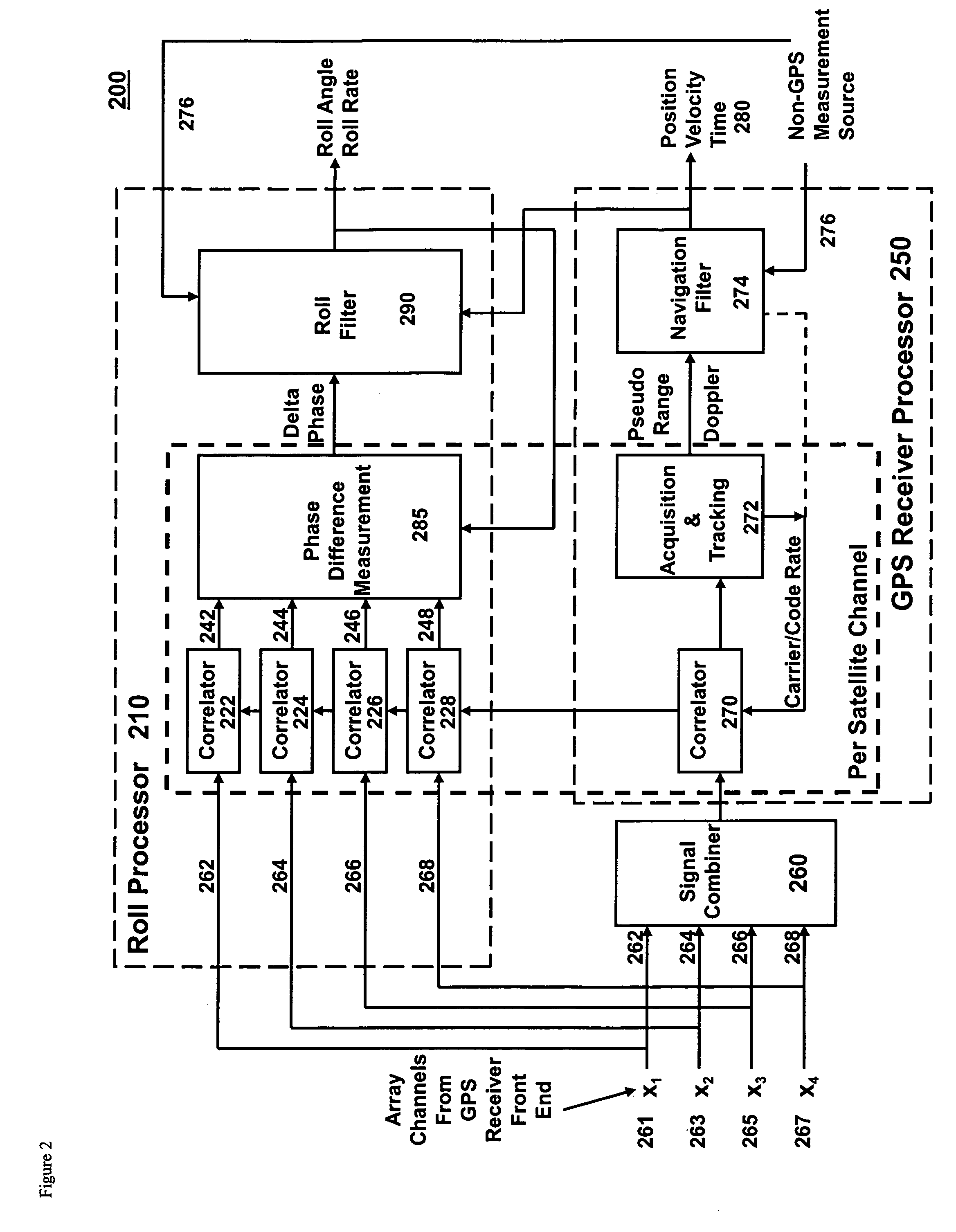Gps-based measurement of roll rate and roll angle of spinning platforms
a technology of rolling platform and measurement angle, which is applied in the direction of measurement devices, instruments, satellite radio beaconing, etc., can solve the problems of inability to spin faster than the bandwidth of the actuator, inability to fully control the projectile, and high cost of traditional methods of measuring roll rate and angle, etc., and achieve the effect of low cos
- Summary
- Abstract
- Description
- Claims
- Application Information
AI Technical Summary
Benefits of technology
Problems solved by technology
Method used
Image
Examples
Embodiment Construction
[0042]FIG. 1 shows the front end body 120 of a notional projectile 100, with its four-antenna array comprising the antennas 151, 152, 153, 154 attached to the body 120 of the projectile 100. The antennas 151, 152, 153, 154 in FIG. 1 are pointed in different directions. Although this diagram is based on a four-antenna system, an antenna array comprising any multiplicity of antennas, two or greater, can be used. For a platform in the typical projectile configuration 100 shown in FIG. 1, these antennas are preferably disposed about the circumference 122 of the body 120 at a selected location 123 of its spin axis 115. For small platforms, the spacing between the antennas can be small fractions of the GPS wavelength. The orientation of the projectile 100 may be defined by a set of three Euler angles, Azimuth, Elevation and Roll (FIG. 1).
[0043]The preferred GPS receiver architecture 200 for a four-antenna array of the present invention is shown in FIG. 2. The standard GPS navigation funct...
PUM
 Login to View More
Login to View More Abstract
Description
Claims
Application Information
 Login to View More
Login to View More - R&D
- Intellectual Property
- Life Sciences
- Materials
- Tech Scout
- Unparalleled Data Quality
- Higher Quality Content
- 60% Fewer Hallucinations
Browse by: Latest US Patents, China's latest patents, Technical Efficacy Thesaurus, Application Domain, Technology Topic, Popular Technical Reports.
© 2025 PatSnap. All rights reserved.Legal|Privacy policy|Modern Slavery Act Transparency Statement|Sitemap|About US| Contact US: help@patsnap.com



